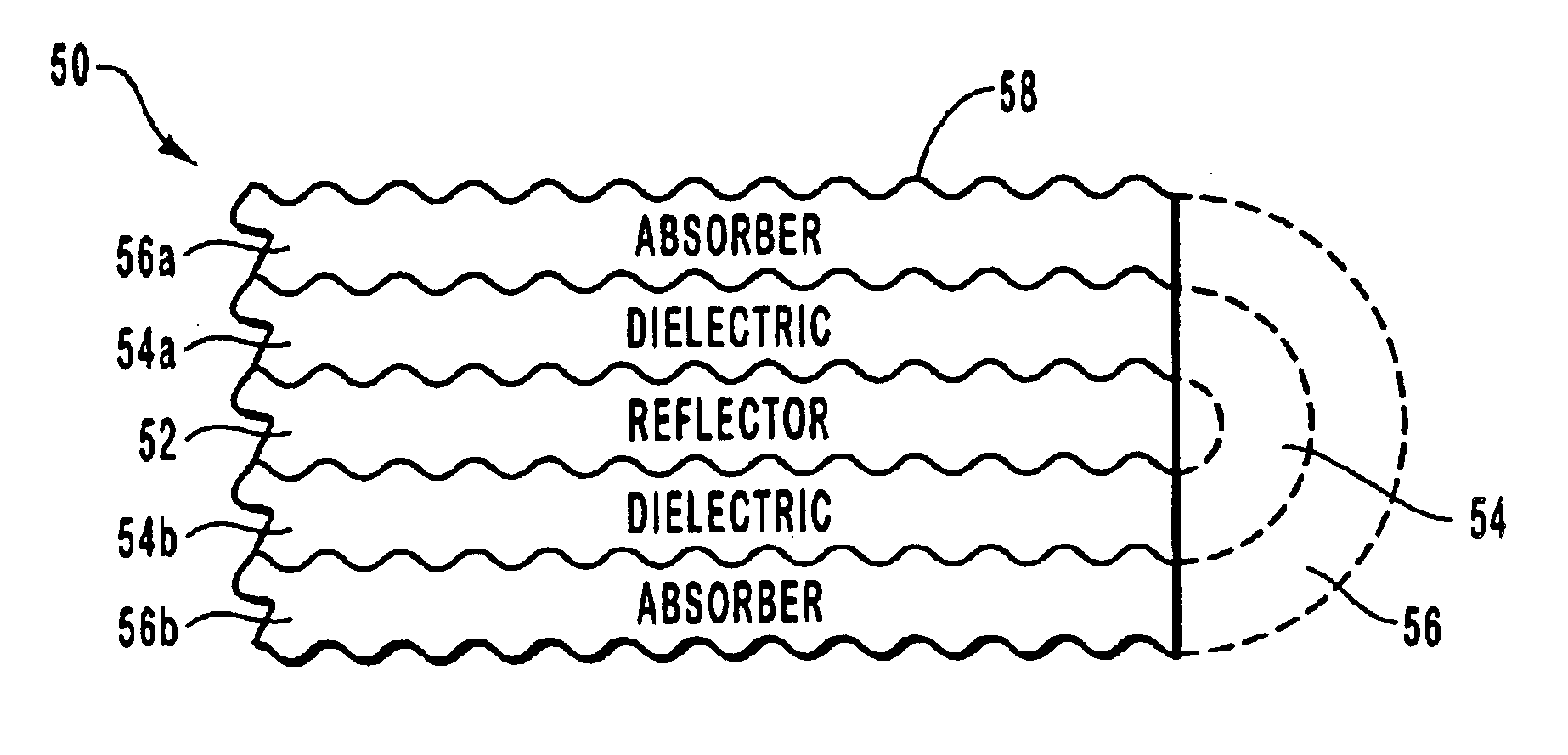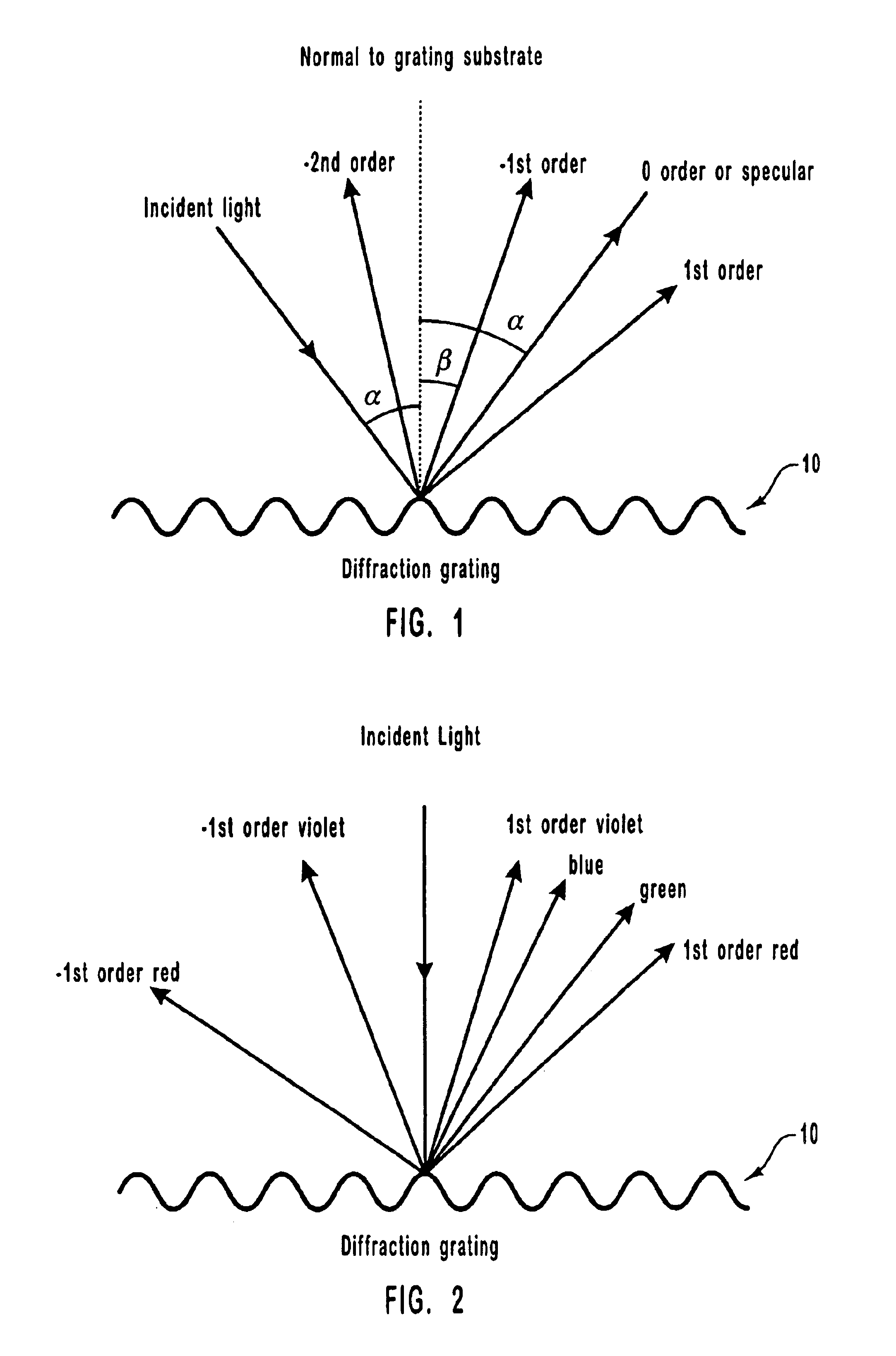Chromatic diffractive pigments and foils
- Summary
- Abstract
- Description
- Claims
- Application Information
AI Technical Summary
Benefits of technology
Problems solved by technology
Method used
Image
Examples
examples
In order to quantify the color characteristics of a particular object, it is useful to invoke the L*a*b* color coordinate system developed by the Commission Internationale de l'Eclairage (CIE 1976), which is now used as a standard in the industry in order to precisely describe color values. In this system, L* indicates lightness and a* and b* are the chromaticity coordinates. The L*a*b*color system was used to generate various a*b* diagrams described in some of the following examples which plot the color trajectory and chromaticity of a selected diffractive pigment.
The L*a*b*color system allows for a comparison of the color differences between two measurements through the parameter ΔE*ab, which indicates the change in color as measured in the L*a*b* color space, such as the color difference of two different pigment designs. The numerical value for ΔE*ab is calculated through the following equation using the measured L*a*b* values:
ΔE*ab=[(ΔL*)2+(Δa*)2+(Δb*)2]1 / 2
where the symbol Δ den...
examples 1-7
The amount of energy relative to the incident energy (efficiency) of diffractive gratings varies as a function of the type of grating and its groove depth. As a result gratings can be optimized for specific wavelengths. The light spectrum distribution in the various diffracted orders for any wavelength will be given by equation 1 set forth previously.
Various diffractive gratings (Examples 1-7) with 500 ln / mm to 3000 ln / mm were modeled using conventional optical software to determine optimal grating configurations. FIGS. 15-20 are graphs of the modeling results, showing diffraction angles as a function of various wavelengths for the various diffractive gratings of Examples 1-7. In particular, FIGS. 15-20 show the diffraction angles for various visible wavelengths (400 nm violet to 700 nm red) at normal and 45° incidence. Table 1 below sets forth the specific Example number with the corresponding Figure number and grating structure that was modeled.
TABLE 1ExampleFigureGrating Structur...
example 8
An aluminized sinusoidal diffractive grating having 1400 ln / mm was modeled using conventional optical software. FIGS. 21 and 22 are graphs showing the theoretical efficiency (percent reflectance) of the grating at various groove depths at normal and 60° incidence for 400, 550 and 700 nm wavelength light. The results of the modeling showed that a groove depth close to about 160 nm is a good compromise to get a minimum zero order and a maximum 1st order contribution, thereby enhancing the diffractive effects of the grating.
Using the same criteria, the optimum groove depth was determined to be about 220 nm for a 2000 ln / mm grating, and about 116 nm for a 3000 ln / mm grating.
PUM
| Property | Measurement | Unit |
|---|---|---|
| Thickness | aaaaa | aaaaa |
| Thickness | aaaaa | aaaaa |
| Thickness | aaaaa | aaaaa |
Abstract
Description
Claims
Application Information
 Login to View More
Login to View More - R&D
- Intellectual Property
- Life Sciences
- Materials
- Tech Scout
- Unparalleled Data Quality
- Higher Quality Content
- 60% Fewer Hallucinations
Browse by: Latest US Patents, China's latest patents, Technical Efficacy Thesaurus, Application Domain, Technology Topic, Popular Technical Reports.
© 2025 PatSnap. All rights reserved.Legal|Privacy policy|Modern Slavery Act Transparency Statement|Sitemap|About US| Contact US: help@patsnap.com



